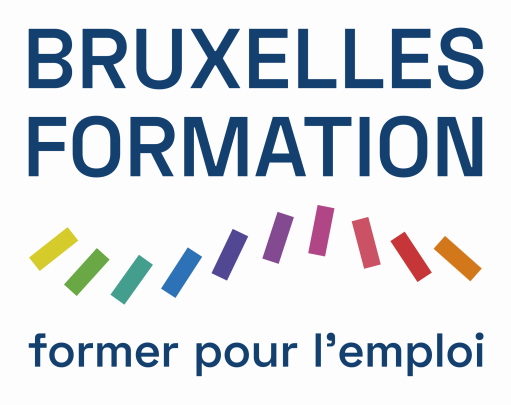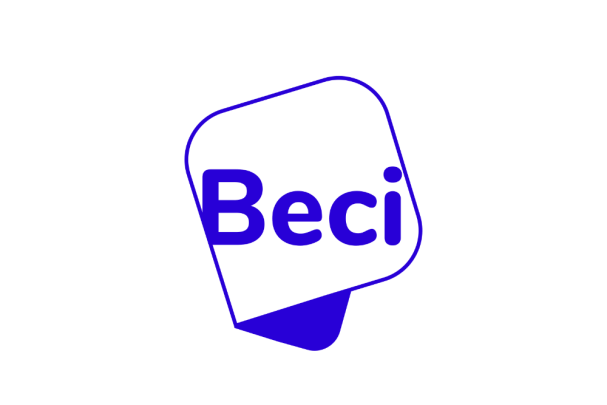This won’t come as a surprise: social media have become essential media over the past 10 years. They are part of our everyday lives and an integral part of digital communication and marketing strategies. The issue is no longer why to communicate via these media, but how to do so effectively.
Why should you ensure your company’s visibility on social media?
Here are the five main reasons why your company should be visible and active on these platforms.
- First, being present on social media as a company or self-employed professional will enable you to ensure the loyalty of your existing customers by maintaining regular contact. Next, you will attract new customers by promoting your products or services. In short, presence sells.
- This is also a way to enhance your company’s identity. This means its visual identity, and more. These channels become a showcase for your project’s DNA, its values, the people involved and the behind-the-scenes. They strengthen the identification of existing customers and the acquisition of new customers via a community close to your founding values.
- From a technical standpoint, ensuring your visibility on these media will indirectly improve the natural listing order of your website on search engines. This is because your presence generates traffic on your site. Knowing that the smartphone has become the primary everyday connection medium, people often find a website via social media before making a purchase online or in a shop.
- A dynamic presence also enables entrepreneurs to develop their professional network of suppliers, colleagues in the sector, etc. New partnerships develop between entrepreneurs who complement or are similar to each other.
- Lastly, growing companies wanting to recruit will find that having a presence on social mediacprovides a way to implement employer branding. That is: your brand image as a potential employer which will enable you to ensure your company’s visibility on the job market.
What social media to use to get started ?
It’s crucial that you identify your target audience and know which media it uses. Let’s take a look at the six most popular social media.
Twitter is a news-oriented social media site with a very varied target audience: the media, politics, non-profits and NGOs, influencers, technophiles, etc. A message is called a tweet and consists of maximum 280 characters; 6,000 tweets are sent every second.
It’s a true viral tool which acts as a barometer for your company’s name recognition by collecting your customers’ feedback. The reputation of personalities and companies are made and undone with hashtags and critical or glowing comments.
Tweets are hard-hitting and concise and the tone ranges from serious to humorous. The typical target audience is male and between 20 and 30 years old. The majority of people don’t tweet anything but “like” and “retweet” other people’s messages.
You can state your opinion or comment on a topic on Twitter to position your company. You can also tweet your news and events, talk about background topics by sharing an article, ask for the opinion of your audience and manage your customer relationships. Don’t forget to retweet relevant content from other accounts related to the DNA of your company, marking the subject with one or two hashtags to increase its visibility.
Facebook probably led the way for social media. The platform is currently experiencing a decline in popularity, in terms of activity. Despite that, it is highly recommended that your company be present. A majority of users prefer its instant messaging service: Messenger.
Facebook is the preferred platform to share your new products or services, your news, events and promotional campaigns. Service providers, (e)stores and the hospitality sector use it often. They ask for customer feedback, organise contests and promote products on their Facebook shop page.
Facebook shares some functionality with Instagram. You can post Stories (ephemeral posts) and static posts simultaneously, synchronise shops and generate paid advertising via Business Manager.
Facebook is primarily a convivial entertainment platform. The content makes a clear appeal to emotion, creativity and humour. Share advice or behind-the-scenes videos to create significant interaction and a real exchange with your audience.
Lastly, the target audience is relatively older than on other platforms with an average age of 20 to 50.
Instagram is the trendiest social network where images take precedence over text. Images rule with quality photos, which are enhanced, and sometimes very sophisticated, and there are also videos, live sessions, and Stories (instant posts). It’s the ideal place for storytelling about your company, its values, its products or its services in action.
The Instagram audience is primarily female and relatively young. 84% of users are under 50 and the largest group is between 18 and 24.
If your company has a BtoC target audience, Instagram is virtually a requirement: e-commerce/commerce, hospitality, food, fashion, creation, handicrafts, communication, interior design, coaching, beauty salons, hairdressers, and much more.
You can sell directly through a shop Instagram will offer to configure for you. But you have to do more than sell. Instagram provides an opportunity to tell your company’s story in a creative way.
Hashtags are important here too because they define the theme of your posts and can be used to create a thread between them.
Instagram lets you create a strong community and interact with it in a personal and convivial way. It’s the preferred haunt of influencers (we’ll talk about them below).
Pinterest is used like a virtual bulletin board to share visuals by pinning them and sorting them by subject. This platform is primarily used by women. It’s ideal for artists, graphic artists, photographers, creators, designers, e-commerce and events.
This platform is a true phenomenon which generates an enormous amount of traffic to websites. In addition, the life span of the content is very long, which increases its SEO. Pinterest is a very interesting showcase for companies that shouldn’t be neglected. Especially because your audience will be present.
One recommendation: share your own images from your website with Pinterest. This way, every pin will be associated with a URL and users will have direct access to the website, an account on the social media, or a product sheet.
LinkedIn is the leading professional social network. LinkedIn will be a major asset if you want to communicate with a BtoB audience. Its users include service providers, IT, medtech, human resources, communication and marketing companies, start-ups and technology in general.
It is used to share news, media publications, job listings, events, studies, customer testimonials, inspirational videos and more.
The readership consists primarily of university graduates equally split between men and women of which 79% are over 37.
LinkedIn is also used by recruiters and headhunters. People use it to look for a job and promote their skills.
From the company standpoint, the content is serious without being austere. If your employees use it, they will also be improving your employer branding and expanding your network. They will be your best ambassadors.
YouTube
We don’t always think about YouTube as a social network, yet that is what it is. Two million videos are viewed every minute and user involvement is particularly strong. Its users are primarily male and between 30 and 40.
YouTube is a good place for your company to show videos about your brand, products or services. You can also use it to advertise.
How can you make your company visible on social networks?
Content creation: what message should you broadcast?
Once you’ve identified the social media your target audience uses, you’ll have to create your account while being very aware of your company’s identity. Some accounts like Facebook and Instagram have special profiles for companies, organisations and e-shops. Select a professional account. They provide much more functionality including the option to sell directly on the networks and to promote your products and services.
You’ll then have to add photos, text and videos to your profile. This is called content creation, which has become a job in itself called Community Management. Each network has its own technical specificities to ensure that content is highlighted. Content creation is ongoing. For example, the standard is three posts per week for Instagram and Facebook. It can be more often on Twitter. There are optimisation tools available for your posts which can be very helpful.
If you use several channels, it’s important to adapt your content for each one of them. A video shouldn’t last more than a minute on Instagram; it can be a bit longer on Facebook. The tone you use will also depend on the social network. The style on LinkedIn and Twitter is more informative and formal. On Facebook, virtual users are addressed directly by appealing to their emotions. On Instagram, you can be friendlier or more personal, with a touch of humour.
Which means that it’s essential that you set your editorial line, writing style and the topics you’ll cover, the values you’ll promote as well as your angle and syntax. Will you be formal or informal with your audience? Will you use the active or the passive voice? What will your preferred hashtags be? Are the emojis relevant to the context?
Paid advertising on social networks
Digital advertising fees are often underestimated by entrepreneurs. Yet, advertising on social networks has become a requirement to increase name recognition and reach a larger, and more relevant, audience.
Each network has its own advertising department with its own specificities and segmentation criteria.
What are the benefits of advertising campaigns on the social networks?
- Precise targeting based on criteria
- Increased brand recognition
- The acquisition of new customers
- The reactivation of existing customers
- An excellent return on investment
- A reasonable cost
- Measurable monitoring of campaign performance
Digital advertising campaigns can act as a springboard by quickly generating traffic on your company’s website and increasing sales.
Before launching your campaigns, it’s essential that you define a strategy for each campaign and allocate a realistic budget to each one. The content used for this purpose must be high quality: enhanced photos and catchy text. Don’t forget to analyse the performance of the campaigns on a regular basis to adjust your aim. Each advertising department provides a summary table with numbers to help you. You’ll get a complete view of click numbers, conversion rates, commitment and feedback about your advertising.
If you can’t manage your advertising yourself, there are many specialists and agencies that can offer quality services to help you.
Influencer marketing
Another way to get known on social networks is to work with influencers and bloggers. Influencer marketing has become the golden goose for brands. Most influencers are on Instagram and YouTube.
This type of partnership, paid or not can increase your visibility, and generate sales given certain conditions.
You have to work with influencers who share your target audience, your location, your values and your vision. The more you have in common with the influencer, the more effective the marketing formula will be. Be sure that the influencer you choose is right for your segment.
The partnership can take the form of product placement, the writing of a blog article, an ephemeral story on camera, a video or a static post… everything is possible! It’s recommended that you agree on the terms and conditions of the collaboration in advance, clearly defining the expectations and conditions of remuneration if there is any.
Be careful not to restrict yourself to influencers with thousands of subscribers whose communities are not always representative, or even real. It’s better to work with an influencer who has 3,000 subscribers in an active community that reflects your values rather than one who is very well known but whose readership is passive or has been bought.
Quality and not quantity are most important for influencer marketing.
Who can help me ?




